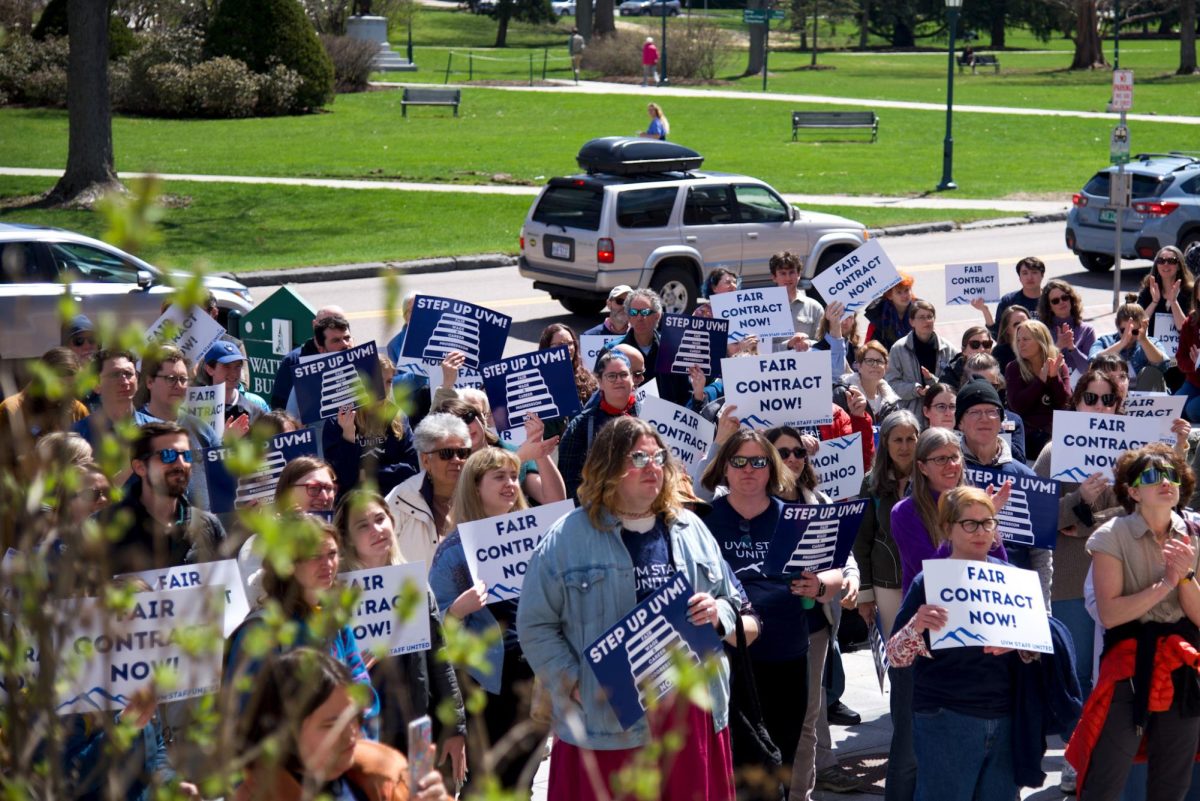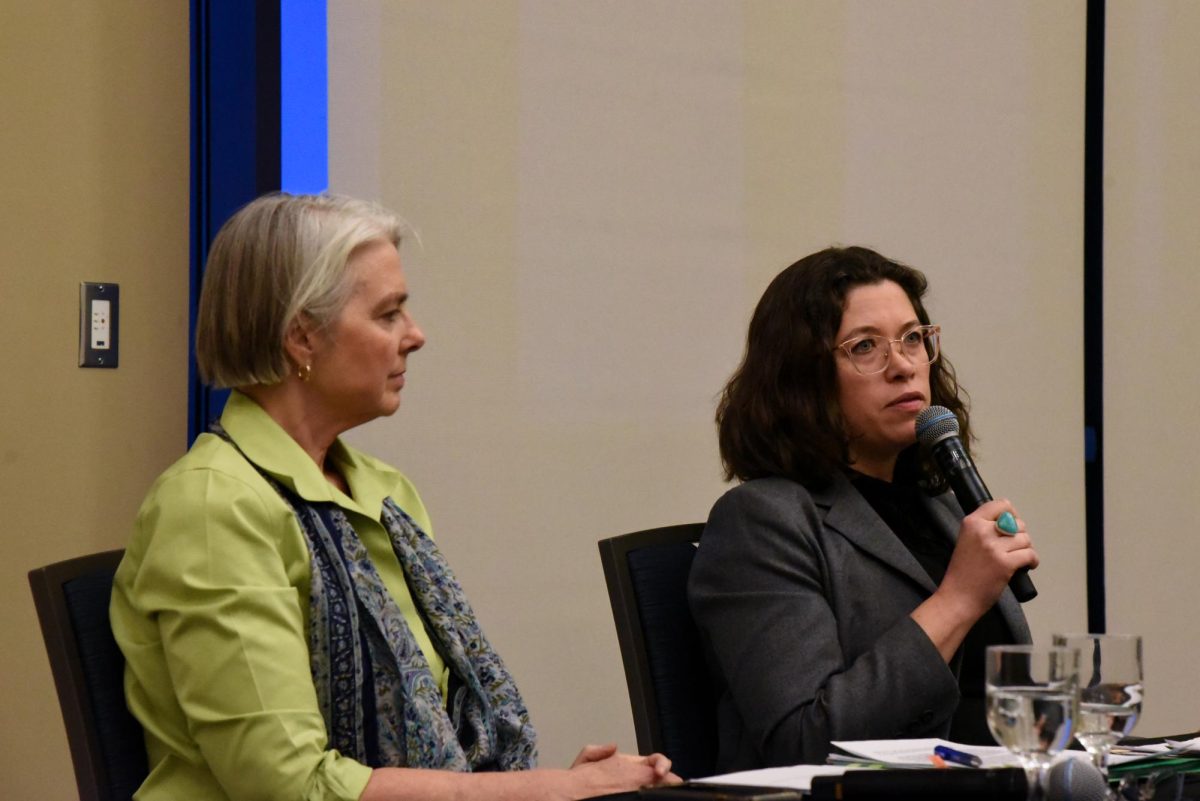Picture a cluttered art studio in the den of a home just off of Colchester Avenue. The studio is complete with colorful finished paintings, works in progress, andempty canvases.It smells homey, as if someone baked cookies the day before and the smell still lingers. Marc Awodey sits on the couch, onefoot resting on the knee of the other leg, hands crossed. Two 2- liter bottles of Diet Coke stand side by side on the floor besidethe couch, both opened and missing some amount of liquid.Awodey reaches down, without looking, and grabs one bottle. He takes a gulp, and puts the bottle back down. He clears his throat.”None of us are so brilliant that our initial idea is always the best,” Awodey said. Moments later, Awodey reaches down and grabs the other bottle of Diet Coke and takes a gulp. Awodey was born in Ann Arbor, Michigan in November of 1960, and he refersto his relationship with art as an “organic” thing; he grew up surroundedby it, and it grew within him as well.Awodey has been employed at two local colleges: Burlington College and the Community College of Vermont. He teachesacrylic painting at CCV, and painting for advanced students at Burlington College.Besides teaching, Awodey’s life in Burlington has a lot to offer to him artistically. Many of his paintings are focused on scenes from the bustle of life in Burlington. “The city itself can beseen as a point of departure for artwork,” said Awodey. “It’s a small town; diverse and peaceful.”By 1984, Awodey had established, forthe most part, his own artistic stylings. He calls himself a ” s t r a i g h t painter,” using mostly acrylics for the first layer of painting, and then oils for a second layer achieving that added vibrant, translucent color. His style is usually based on geometric abstraction.When asked about artistic statement, Awodey will always reply, “My statement is thework.” I did things because I wanted to do it, not because I thought I had to do what people were supposed to be doing,” Awodey saidof his distinctive style.Most of his paintings contain people in the places they live, work, and play. The majority of the people in his work don’t have distinguishable facial features, asif he’s trying to depict the entire human race. “Children Playing War” depicts two childrenfighting with swords. Their faces areblank. “I paint my environment; I paint the worldaround me,” Awodey said. “There’s this quote that I particularly like. I don’t remember where I heard it; I actually mighthave made it up myself. It goes, ‘The anatomy of the picture is more important than the anatomy of the subject.'”Awodey also paints landscapes, architecture and still lifes. He considers his work highly original and unique with occasionalreferences to the work of artists from the proto- Renaissance era and Early Expressionists from the 20th century.”I think the paintings themselves inspire me,” said Awodey. After some nagging, he admitted to having other outside influencesin the two abstractionists, Debroke and Kadinsky.Looking for a more steady income, Awodey began working as an art critic for an online art publication in 1997. After composing a couple pieces for Art New England, he signed on as a permanent art critic for Vermont’s own Seven Days. He has been writing for it ever since.On his job as an art critic, Awodey said “I like it quite a bit. It sort of limits my ability to show my work around Vermont, it’s a conflict of interest. But I have tomake money somehow.” Awodey had a younger brother, Scot, who was an avid bicyclist and led mountain bikingtours across the terrain of the Southwest. One day in 1992, Scot was leading a tour of the Grand Canyon when his bike went offcourse and he fell into the canyon. Scot’s death greatly affected Awodey.While dealing with his brother’s death, Awodey found himself becoming less and less productive as an artist and poet. “I felt empty, I was totally reclusive,” said Awodey. As a result of his depression, Awodey was hospitalized several times between 1995 and 1997. During hishospitalization he experienced numerous shock treatments and went in and outof suicidal phases. By the end of 1997 Awodey was prepared tocome out of isolation and back into the outside world. He helped to found the Rhombus Gallery in downtown Burlington as an independent, nonprofit communityarts center.”An artist should promote others as well as themselves,” said Awodey. “If you support 10 artists, 10 artists will supportyou.” The gallery closed in 2003. In 2002, Awodey released his second volume of poetry, “New York: A Haibun Journey,” a volume of poetry that chronicled oneof Awodey’s trips to New York City in where he “felt alienated by the whole culture” and “spent nearly the whole weekend drinking and smoking.”Regardless of his unconventional style of poetry and his troubling topics, his poetry has become nationally acclaimed.Among other awards and honors, Awodey became the champion of the NationalPoetry Slam with Haikus. Want to know asecret about Awodey? He’ll tell you himself.”I personally think my poetry is better than my art.” Awodey’s paintings can beseen now through the end of November at Burlington College. While you’re there, say hello.He’ll be the one with his justlong- enough hair pulled back into a semi-ponytail and, potentially, simultaneously drinking twoopened bottles of Diet Coke. For more information on Marc Awodey’s work, visit www.marcawodey.com












